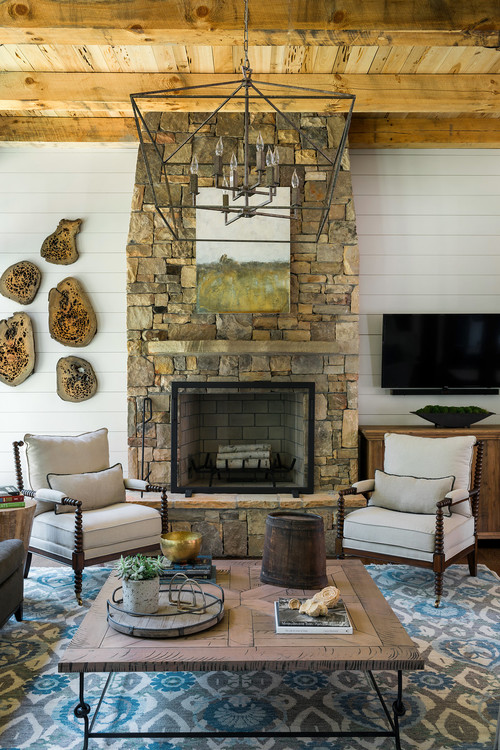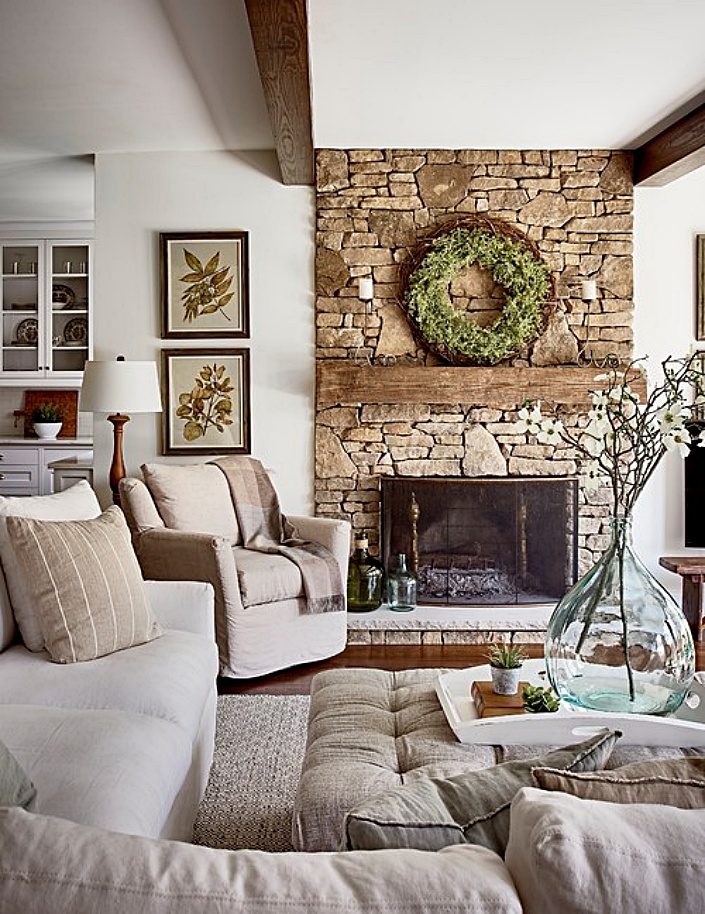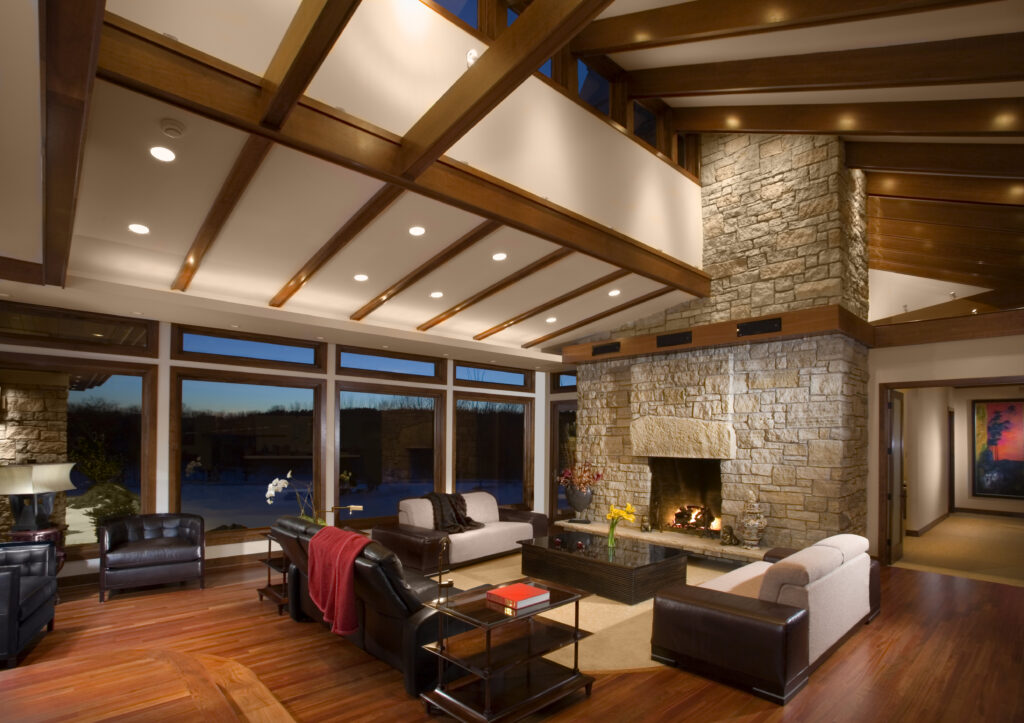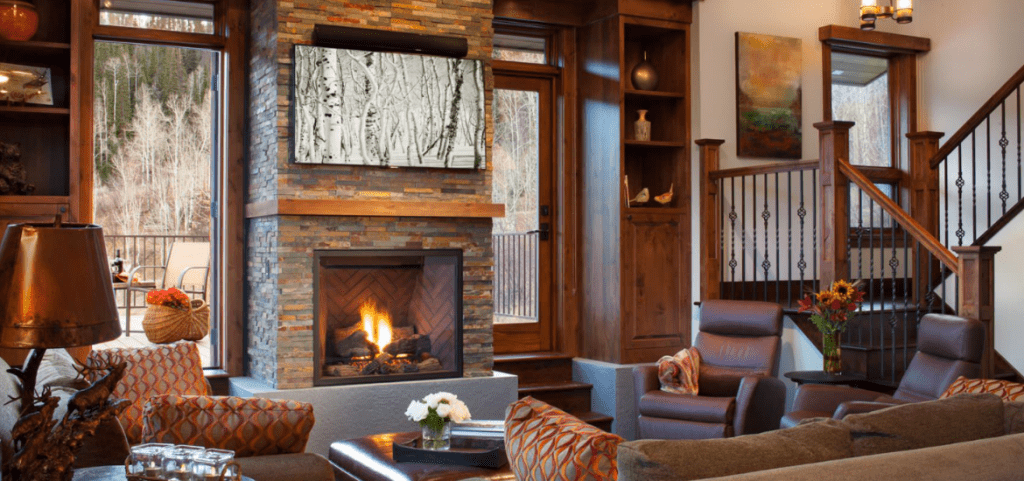A stone fireplace serves as the heart of any living room, offering both practical warmth and striking visual appeal. Whether crafted from rugged fieldstone, sleek marble, or rustic river rock, these natural elements bring texture and organic beauty to interior spaces. Stone fireplaces work with various design styles, from cozy cabins to modern minimalist homes, creating a focal point that enhances the room’s atmosphere. Beyond aesthetics, they provide efficient heating and lasting durability, making them a worthwhile investment for homeowners. With proper design and placement, a stone fireplace transforms an ordinary living room into a welcoming retreat for family and guests.
Choosing the Right Stone Material
Natural stone options like granite, limestone, and slate each offer distinct advantages for fireplace construction. Granite provides exceptional durability and heat resistance, ideal for frequent use. Limestone’s soft, neutral tones create a warm, traditional look, while slate’s layered texture adds depth and character. These materials vary in cost and maintenance needs, with some requiring periodic sealing to prevent staining.
Manufactured stone veneers present a lightweight, budget-friendly alternative with realistic textures. High-quality versions convincingly mimic natural stone while being easier to install. Veneers work well for retrofits or homes where weight is a concern. They also offer consistent sizing and color, simplifying the design process for those seeking a uniform appearance.
The choice between natural and manufactured stone depends on budget, structural considerations, and desired aesthetics. Natural stone delivers authenticity and long-term value, while veneers provide affordability and installation flexibility. Both options can create a stunning fireplace when properly designed and executed.
Design Styles for Every Home
Rustic stone fireplaces feature irregular shapes and rough textures, perfect for cabins or farmhouse-style living rooms. These designs often incorporate exposed beams and wooden mantels for added warmth. A large hearth provides functional space for displaying decor or storing firewood, enhancing both form and function.
Modern interpretations use clean lines and smooth finishes, with stacked stone or geometric patterns. Sleek marble or honed limestone creates an elegant, contemporary look. Many modern designs eliminate traditional mantels, focusing instead on the stone’s natural beauty. Linear gas fireplaces complement these minimalist aesthetics beautifully.
Transitional styles blend traditional and contemporary elements for versatile appeal. A neatly cut stone surround with simple lines works well in various settings. These designs often feature neutral color palettes that adapt easily to changing decor trends, offering long-term design flexibility.
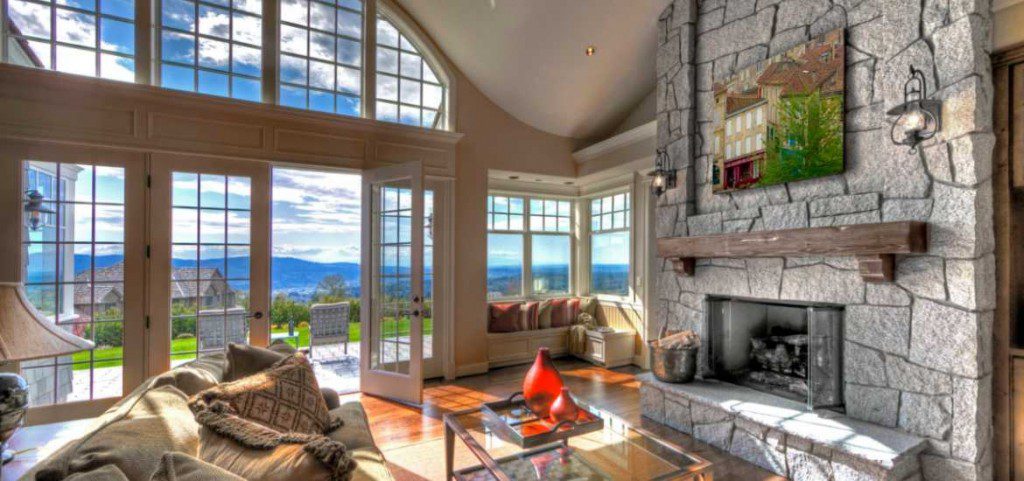
Optimal Placement and Layout
Central placement creates a natural gathering point, making the fireplace the room’s focal point. This traditional arrangement works well in square or rectangular living rooms, with furniture arranged conversationally around the hearth. Proper clearance from walls and flammable materials ensures safety while maintaining good heat distribution.
Corner installations maximize space in smaller living rooms or open-concept areas. Angled designs can make the room feel larger while still providing warmth and ambiance. Built-in shelving or storage on adjacent walls helps balance the asymmetrical layout.
For rooms with limited space, a shallow-profile design maintains functionality without overwhelming the area. A narrow stone surround with a gas insert provides heat and visual interest while conserving floor space. Careful furniture arrangement prevents the area from feeling cramped.
Complementary Design Elements
Wooden beams or reclaimed timber mantels pair beautifully with stone, adding warmth and contrast. These natural materials enhance the organic feel of a stone fireplace while providing display space for artwork or family photos. The combination creates a balanced, inviting atmosphere.
Built-in shelving or cabinetry flanking the fireplace increases functionality. Symmetrical bookcases create a polished, library-like feel, while asymmetrical designs offer more eclectic charm. These additions provide valuable storage and display opportunities.
Lighting plays a crucial role in highlighting the stone’s texture and color. Recessed ceiling lights wash the surface with soft illumination, while adjustable wall sconces create dramatic shadows. Dimmable options allow for mood adjustments depending on the occasion.
Heating Efficiency and Performance
Masonry stone fireplaces excel at radiant heat retention, warming spaces long after the fire extinguishes. Their thermal mass absorbs heat during burning and gradually releases it, providing consistent warmth. Proper flue design ensures good draft while minimizing heat loss up the chimney.
Modern inserts can significantly improve efficiency in existing stone fireplaces. Gas or wood-burning inserts with sealed combustion systems direct more heat into the room. Some models include blowers that circulate warm air throughout the space, enhancing overall comfort.
Insulation considerations affect both performance and energy costs. Fireproof insulation behind the stone prevents heat transfer to combustible wall materials. In extremely cold climates, additional thermal breaks in the masonry help maintain comfortable room temperatures.
Maintenance and Long-Term Care
Regular cleaning preserves the stone’s natural beauty. A soft brush removes dust from textured surfaces, while pH-neutral cleaners handle soot buildup. Avoid harsh chemicals that can damage the stone’s surface or discolor mortar joints.
Annual inspections identify potential issues before they become serious problems. A professional should check the chimney, flue, and firebox for cracks or deterioration. Mortar joints may require repointing every few years to maintain structural integrity.
Protective measures extend the fireplace’s lifespan. Heat-resistant sealants guard against stains and moisture penetration. Using a fireplace screen prevents sparks from damaging the stone surface. During offseason periods, covering the opening reduces drafts and keeps debris out.
How much does a stone fireplace typically cost to install?
Installation costs vary widely based on materials, size, and labor. Natural stone fireplaces range from 3,000to10,000+, while manufactured stone options typically cost 2,000−6,000. Complex designs or custom stonework increases expenses. Gas line installation or chimney modifications add to the total. While expensive upfront, quality stone fireplaces add significant value to homes and last decades with proper care.
Can a stone fireplace be added to an existing living room?
Yes, stone fireplaces can be added to most existing living rooms with proper planning. A professional assessment determines structural requirements, including foundation support and venting solutions. Gas models offer more flexibility in placement than wood-burning versions. Retrofit projects may involve modifying walls or flooring, but skilled contractors can minimize disruption to the existing space.
What’s the best stone for a family with young children?
Smooth, honed stones like marble or limestone are safest for families, as they lack sharp edges. Rounded river rock also works well. Avoid highly textured stones with jagged surfaces that could cause scrapes. A raised hearth provides additional safety by keeping the firebox out of reach. Always install a sturdy fireplace screen as an extra precaution.
How often should a stone fireplace be cleaned?
Wood-burning fireplaces need monthly cleaning during use to remove ash and soot. Gas models require less frequent cleaning – a thorough yearly cleaning suffices. The stone surround itself benefits from dusting every few weeks and deep cleaning twice annually. Chimneys should be professionally swept at least once per year for wood-burning units to prevent creosote buildup.
Can you paint or whitewash a stone fireplace?
While possible, painting natural stone is generally not recommended as it’s difficult to reverse. Whitewashing offers a more subtle alternative that allows some stone texture to show through. Special mineral-based paints adhere best to stone surfaces. Before altering the appearance, consider that natural stone’s value lies in its authentic look, and painted surfaces require regular touch-ups.
How do I decorate around a stone fireplace?
Balance the stone’s weight with appropriately scaled artwork or mirrors above the mantel. Layer decor of varying heights for visual interest. For rustic fireplaces, incorporate natural elements like wood or iron. Modern stone fireplaces pair well with metallic accents and clean-lined decor. Seasonal decorations can refresh the look throughout the year while maintaining the stone’s timeless backdrop.
Stacked Stone Fireplace Ideas Sebring Design Build
Related Posts:
